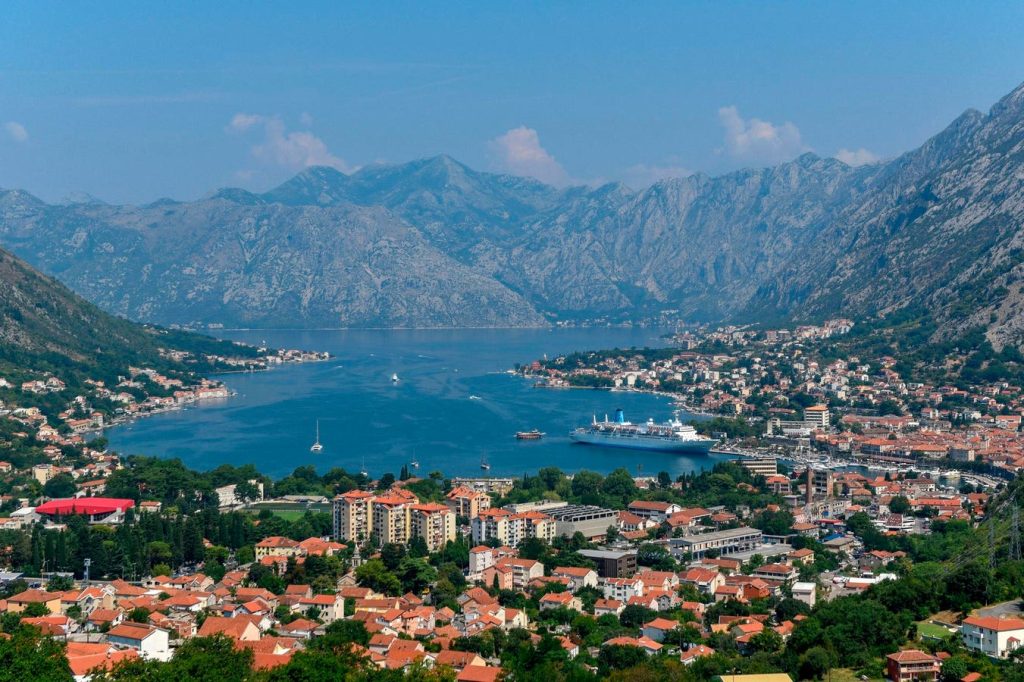The rain began around 2 a.m. Within minutes, lightning coursed close to our small gulet before finding a higher target on the mountainside above. Water seeped in through every porthole, and the crew spent the night frantically lashing down and mopping.
By the morning, the azure waters of Kotor Bay had turned brown, with chunks of earth, twigs and sediment rushing past the stern of the boat. The climate of this small mountainous country, flanked to the south by the Adriatic, has historically varied from mild Mediterranean, with warm waters and lavish vegetation in the south to continental European in the north.
Despite the storm engulfing us, research from 1991 – 2020 does not suggest that Montenegro is getting any wetter, although residents believe the rain is becoming more torrential. The statistics confirm it’s becoming more arid and that temperatures are gradually increasing.
Maximum summer temperatures have increased more than those in winter, at an increase of 0.27% per decade between 1951 and 2020. Projected seasonal temperature are expected to increase between 0.6 – 1.3 degrees over the same period.
A paper published in 2023 showed an increase in the number of summer and tropical days and nights. Meanwhile, the number of frost and ice days has fallen. The authors say this indicates a clear tendency of warming over the 70 years to 2020.
“We used to have deep snow all winter, but there was only 50 cm this year,” says Rale, the deckhand on our small boat cruise, who comes from Nikšićki Korzo in the mountains in the north. Other than in Autumn, the greatest temperature changes are in the northern part of Montenegro.
Extreme weather events—especially droughts and heat waves— are becoming more frequent. As Montenegro becomes hotter and drier, more droughts and heavy rains will affect agriculture, forestry, water resources and natural environments, the coast, and the coastal region. Sea surface temperatures will rise, while the sea will also rise by 62 cm by the end of the century.
Outside the medieval walls of Kotor, farmers sell tomatoes, cheeses, vegetables and fruits. But perhaps the most important trade is in olives and Montenegrin olive oil. Olives are the oldest adapted subtropical crops grown on the coastline of Montenegro. Olives have been one of the most adaptable Mediterranean crops, covering a third of the area of cultivated fruit trees. Most olive cultivation is rainfed due to favourable precipitation patterns. Climate change calls into question the practice of rain-fed cultivation.
With global warming, the flowering date for olives in the western Mediterranean could become significantly earlier by the end of this century. In the future, olive-intensive cultivation could increase water demand, while water will be less freely available. This could have severe implications for the olive industry, a significant part of Montenegro’s agricultural sector, and lead to a decline in olive production.
There’s an additional threat to olive production and agriculture more generally, but it doesn’t come from the climate. The medieval city is Montenegro’s top tourist attraction, and tourism is the largest contributor to the country’s GDP – 30%. In Kotor, where we have come to shelter from the driving rain, Cunard’s massive Queen Victoria leans over us, disconcertingly taking up most of the cockpit’s windows on one side. “Cruiseliners like these are where everybody from my city wants to come and work,” Rale says. “They all want to go to America. I’ve been there three times.”
Montenegro’s deep maritime history plays out today with young people working on cruise-liners toppling over the harbour of Kotor. This season alone, 500 cruisers are booked to dock outside the city walls.
This drains ingenuity and youth from those communities, raising further questions about the future of these communities and their ability to cope with the changing environment.
Read the full article here






